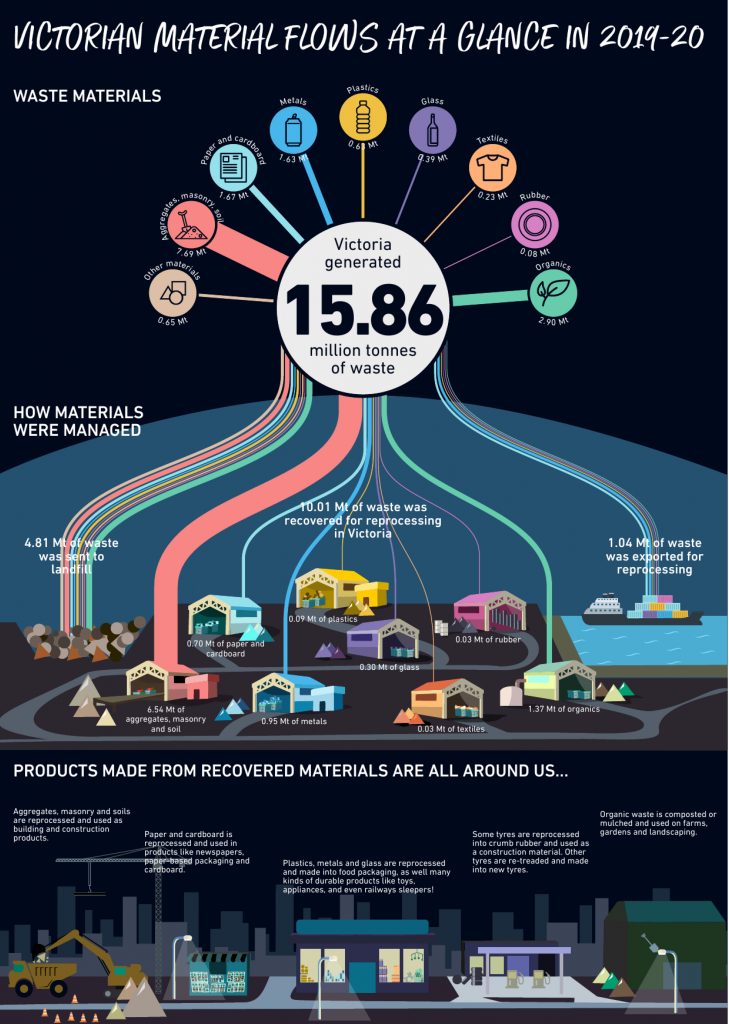EPA Financial Assurances for Construction and Demolition Waste
DR ELIZABETH GIBSON, CMPA General Manager
The Victorian construction and demolition waste (C&D) recycling industry is proud of its contribution to the circular economy with many of our members being at the forefront of product development and reuse of construction materials across Victoria and Australia, these businesses being pioneers in the industry and in business for decades.
The introduction of the Environment Protection Act 2017 (EP Act) on 1 July 2021 has had unforeseen consequences on the construction and demolition (C&D) waste recycling industry. C&D waste also includes paddock rock and recycled aggregates etc.
A Financial Assurance is used to provide security for the costs of remediation and clean-up associated with certain waste management and contaminated land activities.
Financial assurance was introduced by the EP Act following several incidents where EPA conducted clean-up following business failures and pollution incidents.
Below is an extract from a letter sent by CMPA to the Minister for Energy Environment and Climate Change The Hon. Minister D ’Ambrosio MP regarding EPA Financial Assurances and their impact on the C&D recycling industry.
Issue
Exorbitant financial assurances are now required for storage of C&D waste waiting for processing on site. Using the designated formula in EPA Publication 2003.1 “Calculation of financial assurances for landfills, reportable priority waste management and waste and resource recovery facilities.”
WRRF: Waste and resource recovery facility
For a very modest 20,000 tonnes of C&D waste, leads to a financial assurance of $4.3 million.
Operationally, the C&D recyclables such as concrete and brick must be accumulated (stockpiled) on site to ensure stability of the recycling process i.e., inspection and segregation of materials, preparation for the crushing process, product traceability and in some cases stockpiling until it is at a financially viable volume for processing.
The EPA formula (pg.24), prescribed to C&D recyclables used is the same as that for asbestos contaminated C&D waste.

We understand the intention of the financial assurance is to protect the environment and the community from the environmental risks and costs where a recycler is unable to continue or goes bankrupt (as in the case of SKM and Broderick road mixed waste site in Lara) but the current formula “assumes” that all recyclable material and recyclers pose the same risks and costs and should all be disposed to landfill. This “assumption” is incorrect and only serves to penalise legitimate long-term recyclers such as the C&D recyclers. C&D stockpiles are very different from SKM and Lara as they are segregated into recyclable stockpiles of concrete, brick and rock which are:
• Inert and not flammable eliminating fire risk.
• They are do no generate leachate and/or gas.
• They do not produce dust and or odour.
• They have a market value greater than the cost of producing and distributing back to market.
• They have a growing local demand and are therefore not vulnerable international commodity markets.
In addition, C&D recyclers are very much aware of their responsibilities under the EP Act and General Environmental Duty and have had procedures and processes in place for decades to ensure that there is a limited risk of having hazardous material such as asbestos in the accepted C&D waste on site.
Discussion
The introduction of the requirement for financial assurances in July 2021 has led to a dichotomy within the Victorian Government:
• Exorbitant financial assurances will lead to the demise of the low-risk C&D waste recycling industry within Victoria.
• 6.5 million tonnes per annum of C&D waste will go to landfill; reducing the recoverable waste in Victoria by 65% (see flow chart pg.26 https://assets.sustainability.vic.gov.au/susvic/Report-Waste-Strategic-Summary-Report.pdf).
• The Victorian Government has a plan for a thriving
circular economy (https://www.vic.gov.au/victoriasplan-circular-economy).
• Department of Transport (VicRoads) has road specifications that mandate recycled C&D material.
Conversations have already been held with EPA (including Lee Miezis, CEO) and adviser to the Minister for Energy, Environment & Climate Change with the outcome being for CMPA C&D recyclers to individually develop their own financial assurance formulas.
Conclusion
To ensure this industry is sustainable into the future we believe the main focus of the EPA should be to ensure that all C&D operators (lawful place of disposal) (Permission types) etc. work to a minimum standard of compliance, rather than imposing a financial assurance on a valuable stockpile of resource which will in turn increase the cost of the end product back to the community.
We believe there should be no financial assurance on C&D operators that demonstrate compliance with the regulator.










You must be logged in to post a comment Login